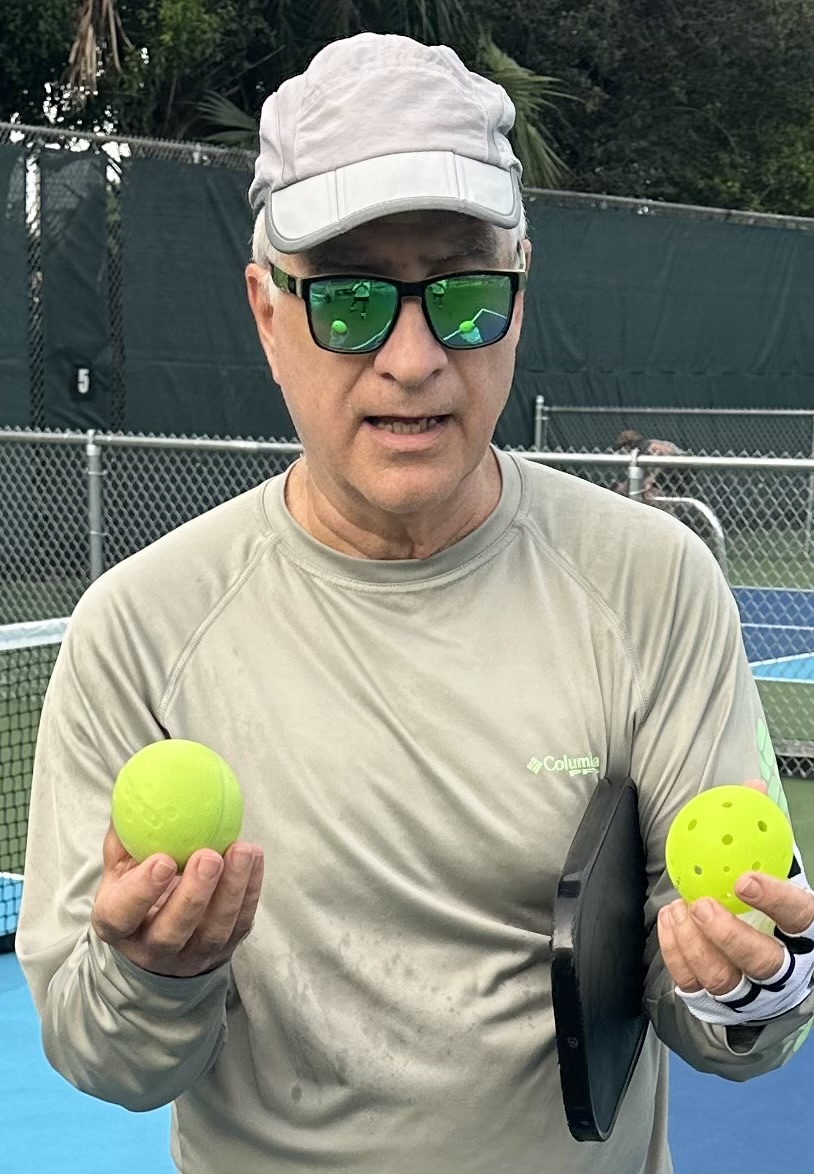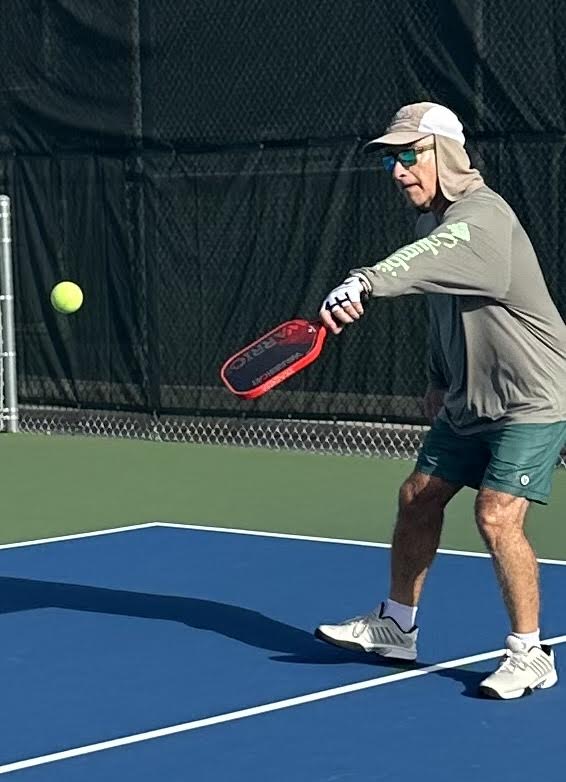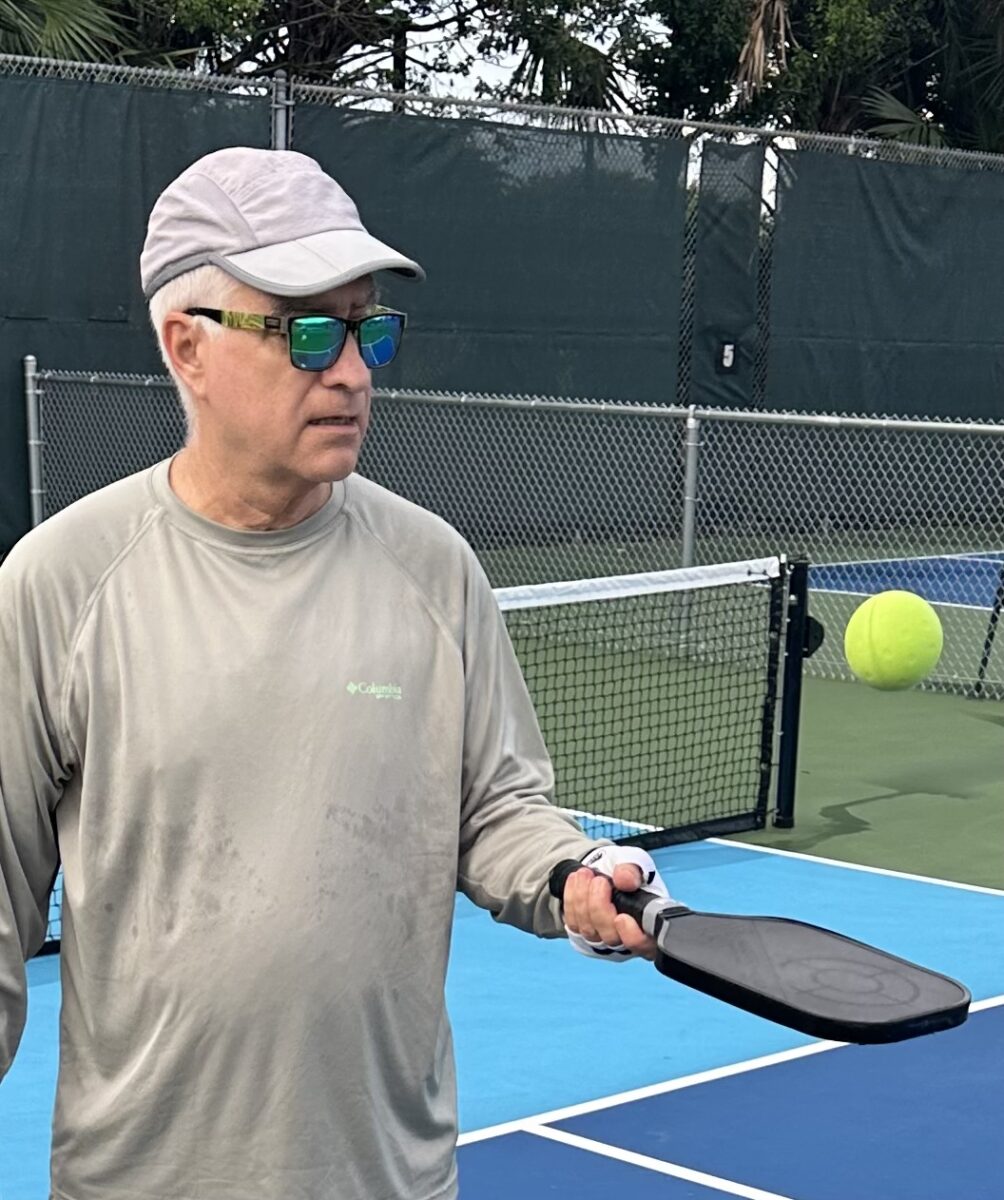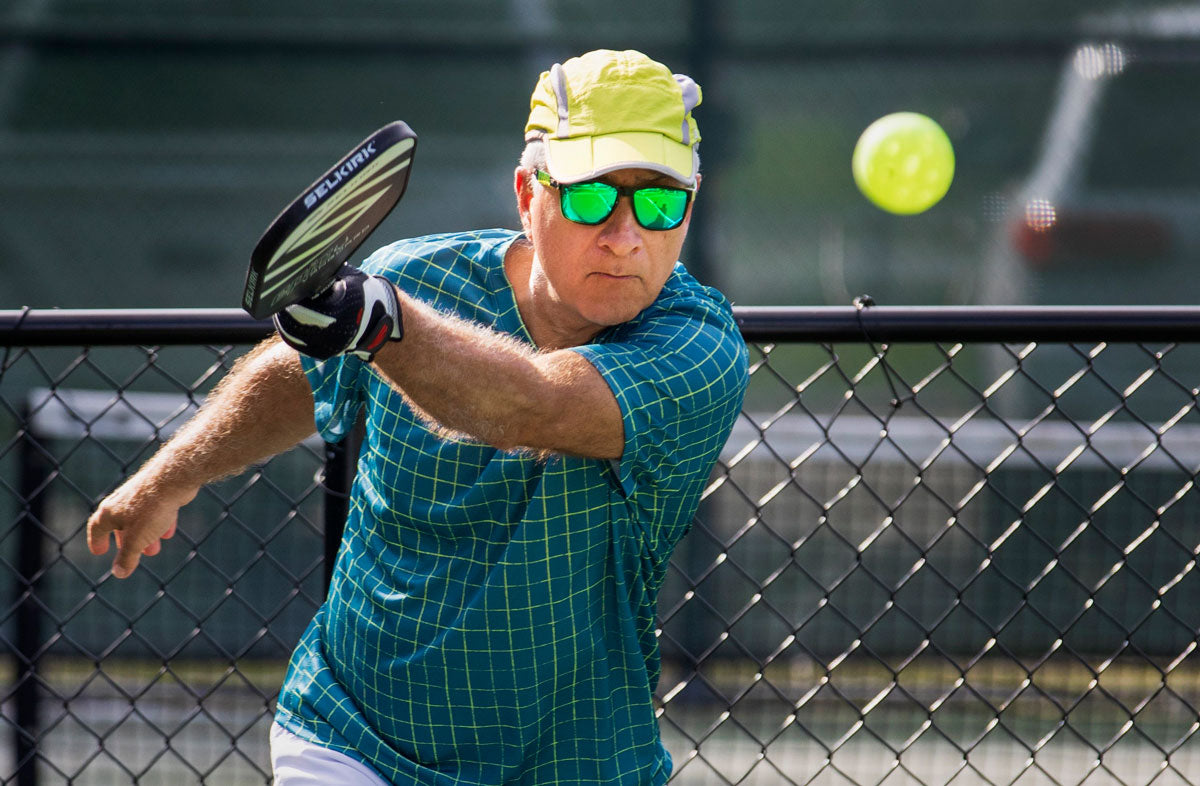Playing pickleball with foam balls rather than the traditional hard plastic balls seems to be a new development in the effort by communities to settle noise complaints.
These noise complaints are typically generated by people who find themselves living near very popular pickleball courts that have been fashioned from existing tennis courts.
Long daily hours of living next to the constant clacking of ball-on-paddle has generated lawsuits with claims of life-threatening ailments, diminished property values and torture of ball sounds in the head, even when the courts are quiet.
Some local governments and neighborhood associations have tried to mollify the complainers by putting up sound barriers near the courts, reducing hours of play, and in one New Jersey town, paying a public employee to guard the courts to keep them empty.
USA Pickleball, the national governing body for the sport, acknowledged the problem when it announced last year that it was certifying “quiet category” paddles.
Pickleball paddle manufacturers have responded by selling paddles that are marketed by their relatively less harsh sound profile. This was particularly showcased this summer with Diadem’s introduction of the Hush paddle, which is advertised as the “world’s quietest paddle.”
“The Hush is lab-tested to be 40 percent quieter than a standard pickleball paddle,” the paddle’s marketing pitch says.
But for some communities, that’s not enough.
Officials in Avondale Estates, a city of about 3,500 people in metro Atlanta, decided this summer to force pickleball players to use foam balls instead of the traditional hard plastic balls on its public courts.

Neighbors of the four pickleball courts there got the city to reduce the hours of play, charge non-residents to play there, and mandate that all pickleball games on the city courts be played with foam balls.
The city is providing foam balls to players.
At first, we here at Murmurs from the Losers’ Bracket were aghast. Forcing pickleball players to use a different kind of ball seemed like a concession that had crossed a line.
What’s next? Playing basketball with couch pillows so people don’t hear the load clanging of a traditional basketball on a metal rim?
And for baseball, does this mean transitioning to rubber bats?
But before launching on a full-throated rant, I thought I’d play with a foam ball to see what it was like.

I ordered some foam pickleballs online that were advertised to be 15 times quieter than a traditional hard-plastic outdoor ball.
When I compared the GoSports Q-Foam quiet pickleball with an outdoor tournament favorite, the hard-plastic Onix Dura Fast 40, they seemed pretty close in size and weight.
The Dura Fast 40 is actually about 5 grams heavier than the foam ball and just a smidge bigger in diameter, although they appear to be equal in size. And when you drop them both from an equal height, they respond with a similar bounce.
That was surprising.
The foam balls don’t make any claims for replacing the traditional indoor or outdoor hard plastic balls. They advertise themselves as “great for noise-restricted courts, after-hours games and indoor practice.”
When I took the foam ball outside to the courts to see how it performed in regular play, the first impression I got was just how quiet it was to play with a foam ball.
It’s surprising and almost disorienting to play pickleball and not hear that distinctive “thwacking” of paddle and ball. That allegedly obnoxious sound is a comforting one to me, and frequently the way I can judge, through its variations, the quality of my shot.
Hearing the faintest thud, instead, was not comforting. Maybe it’s something you get used to as a player.
I know players who say they can’t stand playing indoors because the indoor ball and hardwood courts create a different game than the one experienced outdoors.
That’s true. But “different” doesn’t necessarily have to mean “bad.”
The foam ball is different in that same way. I think the ball plays a little too bouncy, and it seems a little more lively off the paddle too.

But I think you’d get used to it, especially if the choice is the foam ball or no pickleball at all.
That being said, I hope the experiment that’s being played out in Georgia doesn’t spread to other public courts. We pickleball players ought to be entitled to play the game the way it was intended to be played.
The long-term solution to pickleball’s noise problem isn’t to outlaw plastic balls, but to build pickleball courts around communities in a way that keeps them at a respectful distance from homeowners and their sensitive ears.
MURMURS FROM THE LOSERS’ BRACKET
Read past editions of Murmurs from the Losers’ Bracket, including:
- Do Pickleball Prayers Get Answered?
- Ten Tips for Being “Nice” at Pickleball
- Surviving Outdoor Summer Pickleball: Five Tips and One Solution
- Stuck in the OH, FUDGE Zone: Learning to Shake Off Pickleball Dysfunction
- Presidential Politics on the Pickleball Court a Foot-in-Mouth Fault
- Attention Pickleballers: Be On The Lookout For “Ball Blowers”
- Pre-school Pickleball? Finding a Place for Grandkids on the Court
- A Disgrunted Response to the Latest Pickleball Noise Complaint
- Pickleball Mania Hits Target Stores. What’s Next?
- Getting to the Bottom of the Pickleball Metamucil Ad
- The Etiquette Crisis with “Open Play”
- Pickleball Dreams: The Final Frontier of Pickleball Addiction
- Lob into the Sun? Maybe, Maybe Not
- Gathering Intel on your Pickleball Opponents
- Injured? No, I’m Not Injured
- Mastering the Diplomacy of Round-Robin Scheduling
- Confessions of a Paddle Addict
- The Pilgrims and Pickleball – The Untold Story
- A Baby Boomer Lament
- The Golden Bachelor Courts Pickleball
- Is a Pickleball Escort a thing?!
- Losing with Style
- We Beat Go Fish!
- Taking the First Serve… or Not
- “Sorry” Seems to be the Easiest Word
- Top 10 Signs it’s too Hot to Play Pickleball Outside
- Coming In from the Heat
- The Ozempic Ad
- Ball On Court? Maybe Not
- The PPA, the APP and Monty Python
- Time to Get Help at Bangers Anonymous
- “It’s an Injury Sport”
- A Pickleball Translation Guide
- What’s Your Pickleball Nickname?
- Tennis the Menace
- Is There Such a Thing as “Pickleball Torture”?
- How to Be an Effective Pickleball Snob
- All You Need Is Glove
- The Lesson McDonald’s French Fries Have for Pickleball
- Tunes on the Court
- The Poetry of Empty Courts
- “Head Targeting” Rule Change Not a Brainy Idea
- Getting Beyond “Good Game”
- Why Are Pickleball Trophies Such a Big Deal?
- Stop Messing with the ATP
- When Discussions of Rules Turn Unruly
- A Former Pickleball Addict Speaks Out
- Separating the Drinkers from the Dinkers
- Turning Every Magazine into a Pickleball Magazine
- Zen and the Art of Pickleball Maintenance
- Spirited Pickleball Poetry
- Making Pickleball Less “Devastating” to Amateurs
- Finding Romance on the Pickleball Court: Top 10 Pickup Lines
- Sign of the Times: Pickleball License Plates
- Red Light, Green Light: Playing Traffic Cop on the Court
- The Pickler Limerick Challenge
- The Pickler Limerick Challenge Heats Up
- The Pickler Limerick Challenge Wraps Up
- Pickleball & the $100 Hamburger
- Before We Play, Partner, Please Sign This…
- Pickleball’s Most Powerful Spoken Word
- It’s Been a Hard Day’s Night for Pickleball Skeptics
- Be Kind to Your Local “Paddle Sheriff”
- Is There Such a Thing as Too Many Paddles?
- Silence Is… Not My Style
- “Going Ham” Over Pickleball’s Generational Divide

Frank Cerabino is a long-time columnist for the Palm Beach Post in Florida, a pickleball addict like the rest of us, and a newly published author. Check out Frank’s newly released book, I Dink, Therefore I Am: Coming to Grips with My Pickleball Addiction (available on Amazon and a great read (or gift!) for any pickleball player), for pickleball tips and laughs!

Anuncie Aqui / Advertise Here
Sua marca para o mundo Pickleball! / Your brand for the Pickleball world!

 English
English  Spanish
Spanish  Portuguese
Portuguese  German
German  Italian
Italian  Japanese
Japanese  French
French  Polish
Polish  Russian
Russian  Netherlands
Netherlands  Hungarian
Hungarian  Turkish
Turkish  Videos
Videos  The Pickler
The Pickler








 English (US) ·
English (US) ·  Portuguese (BR) ·
Portuguese (BR) ·